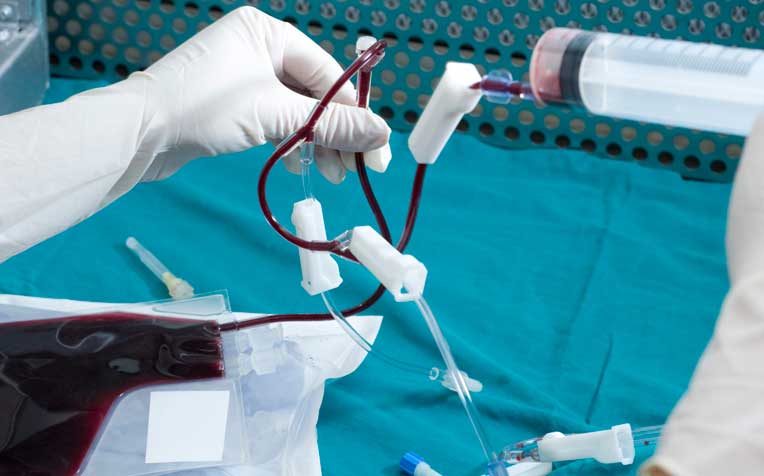
Donating cord blood to a public cord blood bank increases the number of cord blood units available to all potential stem cell transplant patients.
Why is cord blood precious? What are the options for storing?
Clinical Associate Professor Aloysius Ho, Medical Director of the Singapore Cord Blood Bank (SCBB) and Senior Consultant from the Department of Haematology at Singapore General Hospital (SGH), a member of the SingHealth group, explains.
1. What is cord blood?
Cord blood or umbilical cord blood is the blood that circulates through the umbilical cord between a baby and the placenta during pregnancy. It is rich in blood stem cells and can be used to treat certain blood cancers and disorders. Cord blood left in the umbilical cord and placenta can be collected and stored after the baby is born and the cord is cut.
2. Why is cord blood precious?
Cord blood is rich in haematopoietic (blood-forming) stem cells (HSCs), which have the ability to differentiate into different types of blood cells in the human body. HSCs may be used to treat certain blood cancers (e.g. leukaemia and lymphoma), immune deficiencies and even some genetic disorders. These HSCs can be obtained from three different sources: bone marrow, peripheral blood, or cord blood. A unique feature of cord blood is that it is a “naïve” cell, which can adapt to alternative environments more easily than adult stem cells.
3. What illnesses can be treated with cord blood?
The first cord blood transplant took place in 1988. Since then, cord blood has become a trusted alternative source of stem cells for various treatments:
Blood cancers and disorders (e.g. Leukaemia, Lymphoma, Thalassemia Major)
Immune deficiencies (e.g. Severe Combined Immunodeficiency (SCID), aka “Bubble Boy Disease”)
Genetic disorders (e.g. Hunter Syndrome, Osteopetrosis)
In recent years, there have been a number of trials conducted in the field of regenerative medicine¹. Clinical trials have been conducted regarding the use of one’s own cord blood for treatment of cerebral palsy, hypoxic-ischemic encephalopathy, autism, etc². Although there have been some encouraging results in early stage clinical trials, the efficacy of these experimental treatments remains unproven³ ⁴.
4. Can any patient who needs a stem cell transplant find a match?
The probability of being able to use one’s own cord blood for treatment of blood cancers and diseases is extremely low. Reason being that genetic defects that caused the illness are often already present in the patient’s own cord blood. Within a family, a healthy baby’s cord blood has a 25% chance of being a match for a sibling in need of treatment.
Stem-cell matches are most likely to be found in donors of the same ethnicity. Finding a suitable stem cell match can be challenging for Singaporeans and Asians as most global registries are predominantly Caucasian. SCBB’s public inventory of cord blood units mirrors our multi-ethnic population, providing a unique resource for Singaporeans in need of a stem cell match. Data has shown a higher incidence of blood cancer among Malay and Indian communities in Singapore⁵. Public donation of cord blood is important to ensure that the needs of these communities can be met.
5. What are the options to conserve cord blood?
Cord blood can be donated to a public cord blood bank or stored at a private cord blood bank.
(a) Donate it
Donating cord blood to a public cord blood bank such as the SCBB increases the number of cord blood units available to all potential stem cell transplant patients. This therefore increases the chances of finding a suitable match for the patient.
To register for cord blood donation, call SCBB’s hotline at 6394-5011 (between 8.30am to 5.30pm, Mon to Fri) or email them at donate@scbb.com.sg
(b) Store it for your family
With SCBB’s family cord blood banking offering, there is an option of initially storing cord blood units for the family, and later donating to the public inventory if it meets public donation criteria.
¹O’Connor MAC, Samuel G, Jordens CFC and Kerridge IH. Umbilical cord blood banking: Beyond the public-private divide. (2012) 19 Journal of Law and Medicine 512
²Roura S, Pujal JM, Galvez-Monton C and Bayes-Genis A (2015) The role and potential of umbilical cord blood in an era of new therapies: a review. Stem Cell Research & Therapy 2015, 6:123
³Sun J, Allison J, McLaughlin C et al. Differences in quality between privately and publicly banked umbilical cord blood units: A pilot study of autologous cord blood infusion in children with acquired neurologic disorders. Transfusion 2010;50:1980-1987.
⁴Ballen K. Umbilical Cord Blood Transplantation: Challenges and Future Directions. Stem Cell Translational Medicine 2017;6:1312-1315
⁵National Registry of Diseases Office (NRDO), Singapore Cancer Registry Annual Registry Report 2015, released 19 June 2017
Ref: N18
Check out other articles on cord blood:
Cord Blood Donation Myths Busted!


















 Get it on Google Play
Get it on Google Play